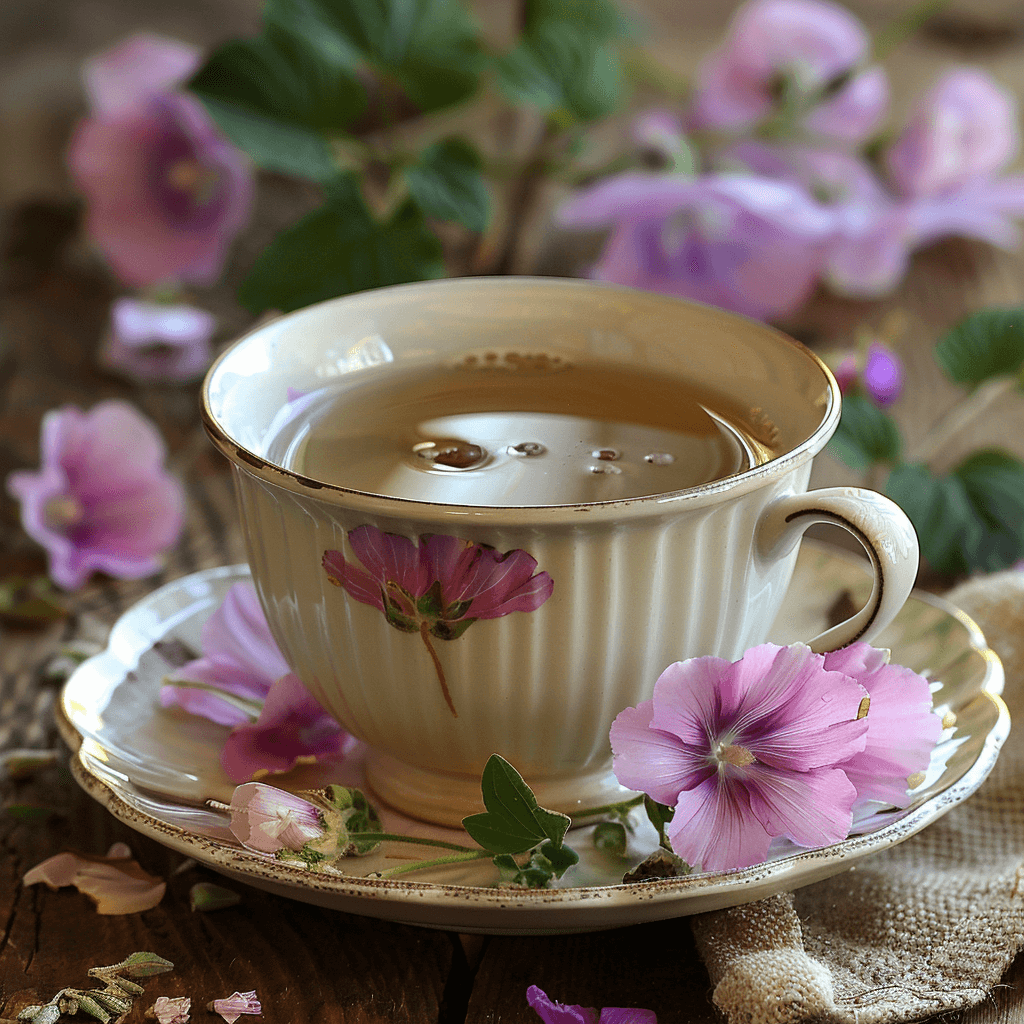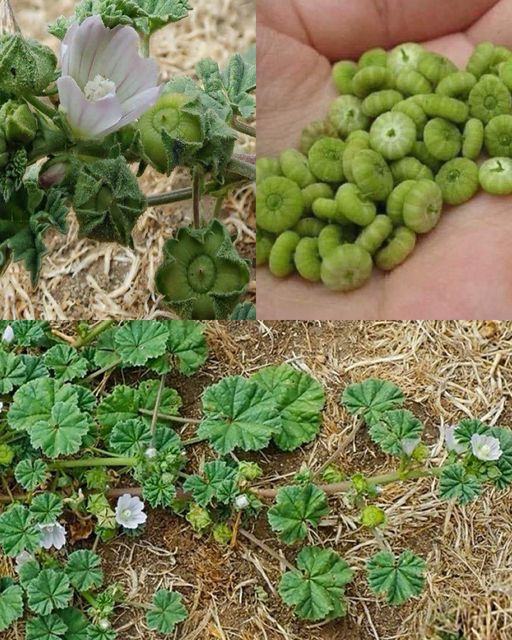In the rich tapestry of the plant kingdom, few plants have become as intertwined with human health and culture as Malva neglecta and Malva sylvestris—commonly known as common mallow and high mallow. These two species, part of the Malvaceae family, have been celebrated for centuries in both traditional medicine and modern health practices. Their deep-rooted history, coupled with recent scientific support, showcases their incredible value in holistic wellness.

How to Differentiate Malva Neglecta and Malva Sylvestris:Size and Growth
Malva neglecta is a low-growing, creeping plant, typically reaching about 30-60 cm in height, making it more compact compared to its taller counterpart, Malva sylvestris, which can grow up to 1.5 meters.
Flowers
The flowers of Malva neglecta are smaller and usually pale pink or white, in contrast to the larger, vibrant purple flowers with dark veins found on Malva sylvestris.
Leaves
When it comes to leaves, Malva neglecta features rounder, less serrated leaves, while Malva sylvestris has more deeply lobed, distinctive foliage.
Unique Characteristics
One of the most notable features of Malva neglecta is its small, round, disk-shaped structures known as “cheeses.” While these are not true fruits botanically, they resemble small cheeses and are an enjoyable addition to various culinary creations.
Nutritional Benefits
These “cheeses” are edible and rich in vitamins and antioxidants. They provide essential nutrients that can contribute to overall health. Consuming them can support your immune system and provide antioxidants that help combat oxidative stress.
They contain vitamins and antioxidants and can be used in various culinary applications. The fruits are edible and can be consumed raw or cooked, adding nutritional value to your diet.

Uses and Health Benefits
Malva Neglecta (Common Mallow)
- Digestive Aid
Common mallow is prized for its mucilaginous properties, making it a soothing ally for the digestive system. Its natural compounds form a protective coating along the gastrointestinal tract, offering relief from conditions like gastritis, irritable bowel syndrome (IBS), and heartburn. Drinking a tea made from its leaves and flowers can provide gentle healing and comfort for digestive upsets. - Respiratory Relief
The expectorant properties of Malva neglecta make it an excellent natural remedy for respiratory issues. By loosening mucus and soothing the throat, it can ease symptoms of colds, bronchitis, and sore throats. A warm tea or syrup prepared from the plant helps alleviate discomfort and facilitates easier breathing. - Anti-inflammatory Properties
The plant’s anti-inflammatory effects help reduce swelling and pain, making it beneficial for those suffering from arthritis or muscle aches. Whether consumed as a tea or applied topically as a poultice, common mallow can help mitigate both internal and external inflammation. - Immune System Support
Rich in vitamins A and C, along with essential minerals like magnesium and iron, Malva neglecta strengthens the immune system. Its antioxidants help protect the body from oxidative stress and bolster defenses against infections, making it an immune-boosting powerhouse. - Urinary Health
Traditionally, common mallow has been used to support urinary tract health. Acting as a mild diuretic, it helps flush out toxins and may reduce the risk of urinary tract infections. Its soothing properties also relieve discomfort caused by inflammation within the urinary system. - Skin Care
Topically, common mallow is renowned for its skin-soothing properties. Its high mucilage content hydrates and calms irritated skin, making it useful in treating eczema, dermatitis, and minor wounds. - Culinary Uses
In addition to its medicinal benefits, common mallow is edible. The leaves, flowers, and stems can be added to salads, soups, or stews, offering a subtle flavor and nutritional boost rich in vitamins and minerals.
Malva Sylvestris (High Mallow)
- Anti-inflammatory Effects
Like its cousin, Malva sylvestris boasts potent anti-inflammatory properties. This makes it useful for easing sore throats, gastrointestinal inflammation, and irritated mucous membranes. A tea or syrup prepared from its leaves and flowers can provide relief from these conditions. - Respiratory Support
High mallow’s ability to loosen phlegm and ease coughs makes it a natural remedy for respiratory ailments. It’s commonly used in teas and syrups to alleviate symptoms of bronchitis, colds, and even asthma. - Wound Healing and Skin Care
Applied topically, Malva sylvestris promotes faster wound healing and soothes skin conditions such as eczema and dermatitis. Its emollient properties also help hydrate the skin, making it an ideal ingredient in natural skin care products. - Antioxidant Benefits
High mallow is rich in antioxidants that protect the body from cellular damage and oxidative stress, which can help prevent chronic diseases and support cardiovascular health. - Digestive Health
The mucilaginous properties of high mallow coat the stomach and intestines, providing relief from indigestion, ulcers, and general gastrointestinal discomfort. - Urinary Tract Health
Acting as a mild diuretic, Malva sylvestris helps detoxify the body by promoting urine flow, aiding in the treatment of urinary tract infections and preventing kidney stones.

Incorporating Malva Neglecta and Malva Sylvestris into Your Wellness Routine
Preparing Teas and Infusions
For both common and high mallow, tea is a simple yet effective way to enjoy their health benefits. Steep 1-2 teaspoons of dried leaves or flowers in boiling water for 10-15 minutes to release their soothing compounds. This method is excellent for calming digestive or respiratory ailments.
Infusions can be used for stronger medicinal preparations. To make an infusion, steep a handful of fresh or dried leaves in boiling water overnight. This nutrient-rich liquid can be used for internal health benefits or as a skin wash.
Creating Poultices for Topical Use
Poultices made from fresh mallow leaves are effective for soothing irritated skin or speeding up wound healing. Crush the leaves into a paste and apply them directly to the affected area, securing with a bandage. This method works well for minor burns, insect bites, and eczema.
Preservation and Storage
Drying the leaves and flowers is the most common way to preserve mallow plants. Lay the plant parts in a single layer on a drying rack in a warm, dry area, out of direct sunlight. Once fully dried, store them in airtight containers for use in teas, infusions, and topical preparations.
Recipe Idea: Mallow Leaf Salad
- Ingredients:
- Fresh mallow leaves
- Cherry tomatoes
- Cucumber
- Feta cheese
- Olive oil
- Lemon juice
- Salt and pepper
- Instructions:
- Wash and chop the mallow leaves.
- Combine with sliced cherry tomatoes, cucumber, and crumbled feta cheese.
- Dress with a mix of olive oil and lemon juice.
- Season with salt and pepper to taste.
- Toss well and serve chilled.

Safety Considerations: Harnessing the Power of Malva Neglecta Safely
While common mallow boasts numerous health benefits, it’s essential to exercise caution, especially if you have allergies or are taking medications. Consulting with a healthcare professional before incorporating common mallow into your wellness routine is advisable. This ensures that it does not interfere with any current treatments or exacerbate underlying health conditions.
To prepare a therapeutic tea using mallow leaves or flowers, follow these simple steps:
Ingredients:
1-2 teaspoons of dried leaves or flowers
Boiling water
Steeping Process:
Place the dried leaves or flowers in a teapot or mug.
Pour boiling water over the mallow leaves or flowers.
Allow the mixture to steep for 10-15 minutes, allowing the hot water to release the mucilaginous compounds and essential oils from the plant material.

Straining and Serving:
After steeping, strain the tea to remove the leaves or flowers.
Serve the soothing mallow tea hot and enjoy its benefits for digestive issues and respiratory conditions.
Mallow Infusions: Extracting Deep-Seated Nutrients for Skin and Health
Mallow infusions can also be used topically to treat skin issues or as a rinse for hair. To prepare a mallow infusion, follow the same steps as for the tea, but use a larger quantity of plant material and a longer steeping time. This method extracts more nutrients and beneficial compounds, providing a potent solution for external use.
Conclusion
Both Malva neglecta and Malva sylvestris offer a wide range of health benefits, from digestive and respiratory support to skin healing and immune system strengthening. These gentle giants of the plant world have been cherished for centuries for their versatility and effectiveness in traditional medicine. As with any herbal remedy, consult with a healthcare provider before incorporating them into your wellness routine, especially if you have underlying health conditions or are taking other medications.
Embrace the healing power of these time-tested plants to enhance your health naturally!
